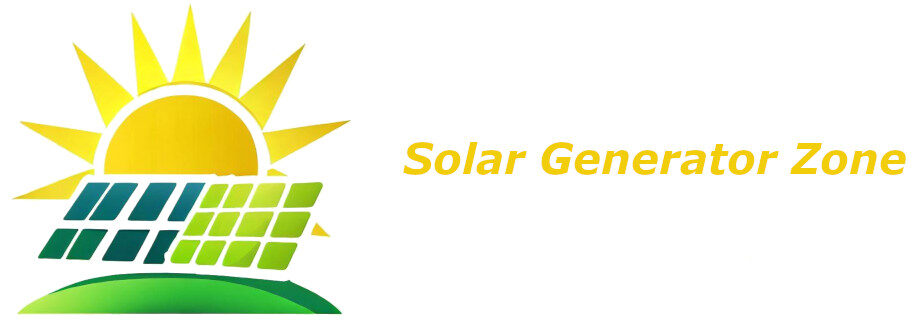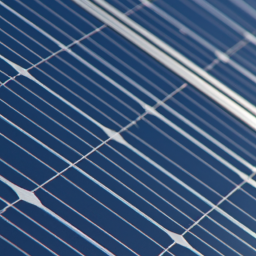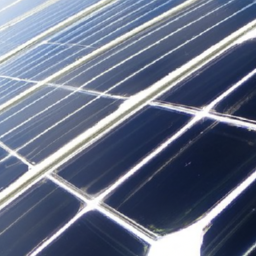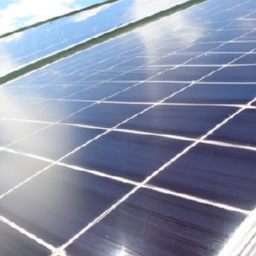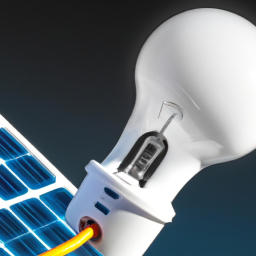Hey there! Have you ever wondered about the limitations of a solar generator? Well, in this article, we’re going to dive deep into that topic and explore all the possible limitations and challenges that come with using a solar generator.
But don’t worry, we’re not just going to leave you with the limitations. We’ll also provide you with some useful insights and tips on how to overcome these challenges and make the most out of your solar generator. So, if you’re curious to know more about the limitations of a solar generator and how to work around them, keep reading!
Solar Generator Basics
Definition of a solar generator
A solar generator, also known as a solar power generator, is a device that captures the energy from the sun and converts it into usable electricity. Unlike traditional generators that rely on fossil fuels, solar generators harness the power of sunlight through the use of solar panels. These panels, made up of photovoltaic cells, convert the sun’s energy into direct current (DC) electricity. The DC electricity is then converted into alternating current (AC) electricity through an inverter, which is suitable for powering household appliances and electronic devices.
How does a solar generator work?
The process of generating electricity from a solar generator begins with the solar panels. When sunlight hits the solar panels, the photovoltaic cells within the panels absorb the energy and create an electrical charge. This charge is then converted into usable electricity through the inverter. The electricity generated can be used immediately to power devices or stored in the solar generator’s battery for later use.
Components of a solar generator
A solar generator consists of several essential components. The key components include:
- Solar panels: These panels are responsible for capturing sunlight and converting it into electricity. The number and size of solar panels determine the overall power output of the solar generator.
- Inverter: The inverter converts the DC electricity produced by the solar panels into AC electricity, which is compatible with household appliances and electronic devices.
- Batteries: Solar generators have internal batteries that store the electricity generated by the solar panels. These batteries provide power during nighttime or when sunlight is not available.
- Charge controller: The charge controller regulates the flow of electricity between the solar panels and the batteries. It prevents overcharging and protects the batteries from damage.
- Output ports: Solar generators are typically equipped with multiple output ports, such as USB ports, AC outlets, and DC outlets, to facilitate the connection of various devices.
Environmental Limitations
Impact of weather conditions on solar generator efficiency
One of the limitations of a solar generator is its dependence on favorable weather conditions. Direct sunlight is essential for optimal performance, and any obstruction or reduction in sunlight can significantly impact the efficiency of the solar panels. Cloudy or overcast weather conditions result in reduced sunlight reaching the solar panels, leading to a decrease in power output. Similarly, rainy or foggy weather can further limit the efficiency of a solar generator.
Effect of shading on solar panel performance
Shading is another factor that affects the performance of solar generators. Even slight shading on a solar panel can reduce its efficiency by blocking the light from reaching the photovoltaic cells. The panels should ideally be placed in a location where they receive maximum sunlight throughout the day, without any shade from buildings, trees, or other structures. If shading cannot be avoided, bypass diodes can be used to minimize the impact on the overall system performance.
Inability to generate electricity at night
Solar generators solely rely on sunlight for power generation, which means they are unable to generate electricity at night. This limitation necessitates the use of a battery storage system within the solar generator. The excess electricity generated during the day is stored in the batteries and can be utilized during nighttime or when sunlight is not available. However, the capacity of the batteries is limited and may not be sufficient for prolonged periods without sunlight.
Power Output Limitations
Limited power output compared to traditional generators
Solar generators typically have a lower power output compared to traditional generators that run on fossil fuels. The power output of a solar generator is determined by the number and size of the solar panels. While advancements in solar technology have improved the efficiency of solar panels, there is still a limit to the amount of electricity that can be generated from sunlight alone. This limitation restricts the use of solar generators for high power-demanding applications or during emergencies that require a large amount of electricity.
Inability to handle high power demands
Solar generators may not be suitable for powering high energy-consuming devices or appliances. high power demand, such as that required by air conditioners, refrigerators, or power tools, can exceed the capacity of the solar generator. It is essential to consider the power requirements of the devices to be powered and ensure they are within the capabilities of the solar generator. Overloading the solar generator can lead to reduced performance and potential damage.
Challenges with running high voltage appliances
Solar generators typically provide AC electricity through their inverters. However, some high voltage appliances, such as certain household appliances or industrial equipment, may require a higher voltage than what the solar generator can provide. In such cases, additional equipment or modifications may be necessary to convert the solar generator’s AC output to the required voltage.
Availability of Sunlight
Dependency on sunlight for charging
Solar generators rely heavily on the availability of sunlight for charging the batteries and generating electricity. The amount of electricity generated is directly proportional to the intensity and duration of sunlight. During cloudy or overcast days, the solar generator’s charging efficiency is significantly reduced, leading to a slower rate of battery charging.
Reduced efficiency in cloudy or overcast conditions
Solar generators experience reduced efficiency in cloudy or overcast conditions due to the limited amount of sunlight reaching the solar panels. Cloud cover can decrease the amount of sunlight by diffusing or scattering it, resulting in lower energy conversion and reduced power output. It is important to consider the local climate and weather patterns when relying on a solar generator for consistent power supply.
Limited power generation during winter months
In regions with distinct seasons, solar generators may experience limited power generation during the winter months. Shorter days and lower sunlight intensity reduce the overall power output of solar panels. Additionally, snow accumulation on solar panels can further block sunlight, affecting the generator’s performance. Regular maintenance and snow removal may be necessary to ensure optimal power production during winter.
Portability and Mobility Limitations
Weight and size restrictions of solar generators
One limitation of solar generators is their weight and size. Compared to traditional portable generators, solar generators tend to be bulkier and heavier due to the inclusion of solar panels and batteries. This can make them less convenient to transport, especially for outdoor activities or remote locations where portability is crucial.
Difficulty in transporting solar generators for outdoor activities
While solar generators offer a portable power solution, the size and weight can pose challenges when transporting them for outdoor activities such as camping or hiking. The bulkiness of the solar panels and the weight of the batteries may require additional effort to move the generator from one location to another. It is important to consider the weight and dimensions of the solar generator before embarking on outdoor adventures.
Challenges of using solar generators in remote locations
Solar generators may not be suitable for use in remote locations or areas with limited access to sunlight. Remote areas often have limited or no infrastructure for recharging the solar generator, making it difficult to maintain continuous power supply. Additionally, the transportation and installation of solar panels in remote locations can be challenging and may not be practical in certain circumstances.
Battery Capacity and Lifespan
Limited energy storage capacity of solar generator batteries
While solar generators offer the advantage of energy storage through batteries, they have limited capacity compared to traditional generators. The energy storage capacity of the batteries determines the amount of electricity that can be stored for later use. Depending on the size and type of the solar generator, the battery capacity may not be sufficient to power high energy-consuming devices for extended periods.
Degradation of battery life over time
The lifespan of the batteries in a solar generator is another limitation to consider. Over time, batteries gradually lose their capacity to hold a charge, resulting in reduced performance and shorter battery life. The rate of battery degradation depends on various factors, including the quality of the batteries and the frequency of use. It is important to monitor and replace batteries as needed to ensure optimal performance of the solar generator.
Challenges in replacing or upgrading solar generator batteries
Replacing or upgrading the batteries in a solar generator can be challenging and expensive. Some solar generator models may have proprietary battery systems, making it difficult to find compatible replacement batteries. Additionally, upgrading the batteries to increase the energy storage capacity may require modifications or adjustments to the solar generator’s internal components. The cost and availability of replacement batteries should be considered when evaluating the long-term viability of a solar generator.
Cost and Affordability
Higher initial investment compared to traditional generators
One of the limitations of solar generators is the higher initial investment required compared to traditional generators. The cost of solar panels, inverters, batteries, and other components can add up, making solar generators more expensive upfront. However, it is important to consider the long-term cost savings associated with solar generators, such as lower or non-existent fuel costs and reduced environmental impact.
Additional costs of solar panel maintenance and repairs
Solar panels require regular maintenance to ensure optimal performance. This may involve cleaning the panels to remove dirt and debris, checking for any damage or wear, and performing necessary repairs. The cost of maintenance and occasional repairs adds to the overall expenses of owning a solar generator.
Limited affordability for individuals with tight budgets
Due to the higher initial cost, solar generators may not be affordable for individuals with tight budgets or limited financial resources. While the long-term savings and environmental benefits of solar generators are advantageous, the upfront investment can deter some individuals from adopting this renewable energy solution. Exploring financing options, incentives, and rebates can help make solar generators more accessible to a wider range of individuals.
Restrictions on Usage
Limitations in using solar generators in certain areas or applications
There may be limitations on the usage of solar generators in certain areas or applications. Local regulations, building codes, or homeowners’ association rules may impose restrictions on the installation and operation of solar generators. Additionally, some sensitive environments or protected areas may have restrictions or guidelines regarding the use of solar panels and generators.
Regulations and permits required for specific installations
The installation of solar generators may require specific permits or approvals depending on the location and size of the system. Local authorities or utility companies may have regulations in place to ensure the safety and compliance of solar generator installations. It is important to research and understand the necessary regulations and obtain the required permits before setting up a solar generator.
Inability to power high energy-consuming devices
Solar generators have limitations when it comes to powering high energy-consuming devices or appliances. Devices with high starting or surge power requirements, such as air conditioners or refrigerators, may exceed the capacity of the solar generator. It is important to consider the power requirements of the devices to be powered and ensure they are compatible with the solar generator’s capabilities.
Backup and Reliability Concerns
Dependency on battery backup during low sunlight periods
During periods of low sunlight or prolonged bad weather conditions, solar generators rely heavily on the battery backup. If the battery capacity is insufficient or the charging conditions are unfavorable, the solar generator may not be able to meet the power demands. It is essential to monitor the battery level and have alternative backup power sources available in case of extended periods without sunlight.
Risk of power interruptions during prolonged bad weather conditions
Solar generators are susceptible to power interruptions during prolonged bad weather conditions, such as storms or hurricanes. If the solar panels are damaged or obstructed by debris, the power output will be significantly affected. Additionally, extreme weather events may affect the overall function of the solar generator, including the battery storage system and the inverter. It is important to have backup plans and alternative power sources in place to ensure continuous power supply during such situations.
Reliability issues with some solar generator models
Not all solar generator models are created equal, and reliability issues may arise with certain models. Some solar generators may experience performance issues or malfunctions that affect the overall efficiency and power output. It is important to research and choose a reputable and reliable solar generator brand or model to minimize the risk of reliability issues. Reading customer reviews and seeking expert advice can help in selecting a solar generator that meets your specific needs and requirements.
Conclusion
Solar generators offer a clean and renewable source of power, but they do have limitations that must be considered. The impact of weather conditions, the limited power output, the dependency on sunlight, the portability and mobility restrictions, the battery capacity and lifespan, the cost and affordability, the restrictions on usage, and the backup and reliability concerns all contribute to the limitations of solar generators. Despite these limitations, solar generators remain a viable and sustainable alternative to traditional generators. It is important to evaluate the specific limitations and advantages of solar generators in the context of your needs and consider alternative power sources when necessary. As solar technology continues to advance, future innovations and improvements in solar generator technology may help overcome some of these limitations and make solar energy even more accessible and efficient.
